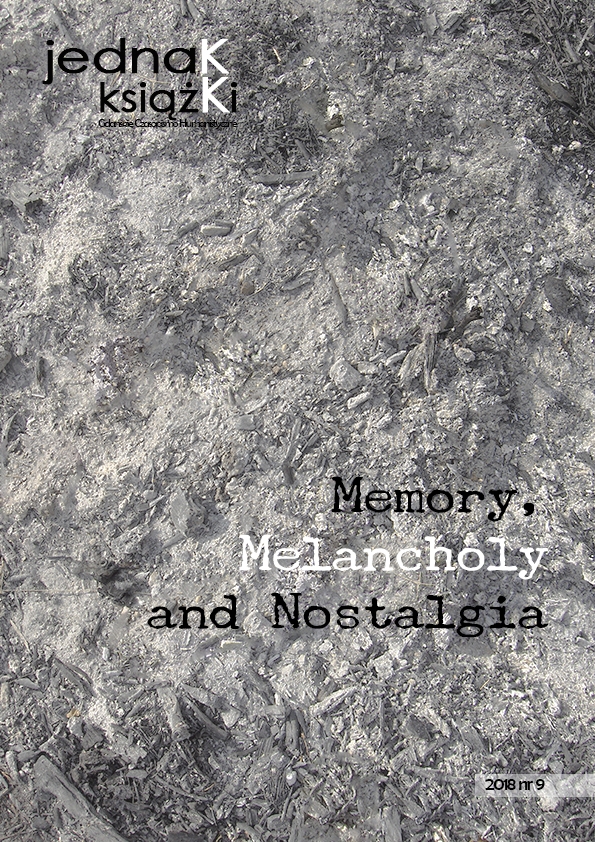Yearning for Beauty. The Expression of Melancholy in Toni Morrison’s “The Bluest Eye”
DOI:
https://doi.org/10.26881/jk.2018.9.07Słowa kluczowe:
Toni Morrison, The Bluest Eye, trauma studies, absence, loss, melancholyAbstrakt
The purpose of the paper is to discuss the sources and results of melancholy in Toni Morrison’s novel The Bluest Eye with reference to Dominick LaCapra’s theory based on a distinction between loss and absence. LaCapra claims that the former concept refers to a particular event, while the latter cannot be identified with any specific point in time or object. What is more, LaCapra admits that absence may result in melancholy, i.e. the state in which the individual remains possessed by a negative emotion because there is no possibility of working it through. The idea of absence causing melancholy is exemplified by the protagonist of The Bluest Eye, Pecola Breedlove. The girl dreams about acquiring blue eyes that belong to the prevailing white model of beauty which excludes African-American features. The feeling of absence is intensified by the U.S. education system aimed at promoting the lifestyle and characteristics of white Americans, her own mother who prefers serving white people to taking care of her own children, and the peers that constantly stigmatize Pecola for ugliness. Consequently, she becomes obsessed with the unattainable blue eyes. Since there is no chance for her to be accepted and thus cope with the absence of white features, the girl suffers from melancholy which leads her to insanity and exclusion from society.
Downloads
Bibliografia
Atkinson Yvonne. 2000. The Black English Oral Tradition in the Works of Toni Morrison, 12-20. In: Marc C. Conner, ed. The Aesthetics of Toni Morrison: Speaking the Unspeakable. Jackson: University Press of Mississippi.
Conner Marc C. 2000. Introduction: Aesthetics and the African American Novel, IX-XXVII. In: Marc C. Conner, ed. The Aesthetics of Toni Morrison: Speaking the Unspeakable.Jackson: University Press of Mississippi.
Klotman Phyllis. 1979. “Dick-and-Jane and the Shirley Temple Sensibility in TheBluest Eye.” Black American Literature Forum13.4:123-125. Accessed May 5, 2015.
Kuenz Jane. 1993. “The Bluest Eye: Notes on History, Community and Black Female Subjectivity.” African American Review27.3: 421-431. Accessed May 5, 2015.
LaCapra Dominick. 1999. “Trauma, Absence, Loss.” Critical Inquiry25.4: 696-727. Accessed July 15, 2014.
Morrison Toni. 2007. The Bluest Eye. New York: Random House Inc.
Rosenberg Ruth. 1987. “Seeds in Hard Ground: Black Girlhood in The Bluest Eye.” Black American Literature Forum 21.4: 435-445. Accessed May 5, 2015.
Stern Katherine. 2000. Toni Morrison’s Beauty Formula, 77-91. In: Marc C. Conner, ed. The Aesthetics of Toni Morrison: Speaking the Unspeakable. Jackson: University Press of Mississippi.
Werrlein Debra. 2005. “Not so Fast, Dick and Jane: Reimagining Childhood and Nation in The Bluest Eye.” MELUS30.4: 53-72. Accessed May 5, 2015.

 Uniwersyteckie Czasopisma Naukowe
Uniwersyteckie Czasopisma Naukowe





